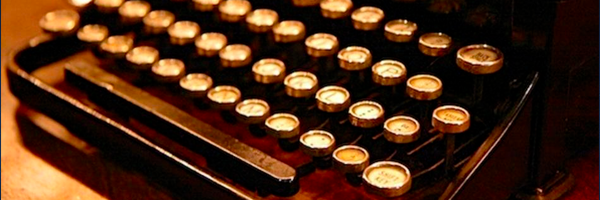Become a Better Designer in Less Than an Hour: Four Ways
A lot of designers just want to “design.”
We want to put on our headphones, dive into Omnigraffle, and crank out wireframes. We design in a corner, without involving anyone else. But that’s not really design — it’s self indulgence for imposing your perspective on a product.
Well crafted interaction design comes out of understanding the environment through the eyes of our users: their wants, their needs, their pain points. It goes beyond the “what” so we can understand the “why.” Our craft requires us to study people and their motivations at a level that most will never understand. That requires us to learn, whether we are on the clock or not.
Here’s how you can become a better designer in less than an hour a day. You don’t have to do this everyday, but the more you do it, the more you’ll learn.
Write on a consistent basis
Writing this blog is a lot of work. I promise myself that I’ll crank out at least 1,000 words a week. However, I’ve become a better designer because of it.
The blog helps me define and express my thoughts. I’ve learned how to communicate more effectively. I have learned how to engage with a potential audience. Writing about user experience gives me conviction about what I believe, and also illustrates where I need to learn more.
Having a readership is a pleasant benefit.
When you write, you don’t have to write about user experience. It could be about anything: personal stories, topical stories, or practical stories about your craft. A friend of mine, Winnie Lim, writes a deeply personal blog and in doing so she has learned how to tell great stories. She values the one-on-one connection she has with her readers, and that’s how she learns. It’s her passion that overflows into her work.
Writing teaches us how to tell better stories about our passions, and we can improve this skill every single day.
Get out of the building
There’s nothing worse than than a designer that doesn’t do user research, because that research can be done anywhere.
Here’s an example:
I love drinking at a bar called Tony Nik’s in San Francisco. When I was drinking there, I wasn’t just drinking: I was watching people use their mobile devices. Most of them were iPhones, but some of them were Androids. I would ask people questions about how they used them, what kind of applications they were using, and how such a device had changed their lives.
I was talking to users in a place that really was just anywhere.
It might not have been directly related to my job, but I learned how users interacted with technology. I frequently think about some of those conversations today. The same can be applied to your current situation — if you’re designing a consumer application, it can be done in a Starbucks. If you’re designing a SaaS B2B application, go visit the customer in their environment.
That’s what is being prescribed by Lean UX, it’s about getting out of the building. It’s not hard, we just don’t do it enough.
Reach out to other designers
What I’ve learned most from talking to other designers is that much of our experience is shared. Talking to stakeholders, understanding users, difficulties with establishing process, we all do it, just in different ways. We all work in environments where User Experience is a new concept.
Another thing that I’ve learned is that every designer brings a different angle on those experiences to the table. We can talk about our struggles to educate others about the need for user experience, and we can also compare notes on successes. Our discussions may include methodologies, a portfolio review, or just trading banter over a new trend like flat design.
Every conversation leads to more learning and deeper knowledge about our craft. It can be in person, on Twitter, or over Skype. Where you have that conversation doesn’t matter as much as the conversation itself.
There’s power in sharing our experiences with others. It makes us better designers, because when we teach, we also learn how to express our stories.
Learn how to code
There’s nothing better than understanding the tools needed to build what you design, and it gives you greater control over your destiny.
That doesn’t mean you have to learn Java, but prototyping ideas helps you learn the constraints of your craft. You’ll communicate more easily with developers that you work with, and maybe even provide solutions that are outside of the box.
Learning to code turns into building side projects for you to play with and experiment. A lot of enterprise software designers don’t get the chance to come up with new concepts for their applications internally, but they can experiment and play with ideas, even at work. You can even collaborate with developers to come up with new ideas, and some of them may take off.
If you learn how to prototype, you can bring that skillset in-house and learn while you are getting paid. Employers don’t mind this because it increases your value to the company.
The goal: Becoming a better designer by expanding your knowledge
Becoming a better designer is a very gradual process that requires a lot of of practice — think K. Anders Ericksson’s 10,000 Hour Rule, except you can learn faster through collective exploration and knowledge. These are just four approaches out of many that other designers take, and I would ask other designers what they do to learn.
It’s up to you to improve your skills as a designer — now go out and do it.
$99 Tough Love Resume and Portfolio Review
Tough love. Great Advice. Receive an one hour portfolio review and career coaching session online, or in person if you're in Seattle.

